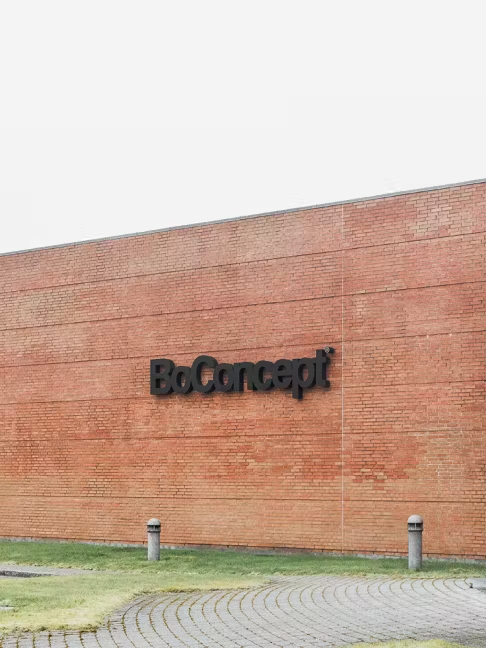The Challenge
Too high inventory levels
Could not adjust forecasts for specific product numbers
Reduced overview due to the complexity of many countries and many stores
Ad hoc analyses demanded many resources

The result
- Reduced inventory levels
- Adjusted forecasts for specific product numbers
- Powerful analysis tool gives overview and detailed knowledge on item level
- Focused time consumption for forecasts in the logistics department

“AGR works on item number level, so now we can get automatic forecasts for specific products. At the same time, the quality of the forecast is good, and the system has contributed well to reducing inventory levels, while increasing service levels.”
- BoConcept
- Dennis Bilgrav, Logistics Manager, BoConcept
Passion and perseverance are core of the BoConcept brand. Their mission is to make modern designer furniture and accessories accessible to customers who are fascinated by the urban lifestyle. Customers who love design, energy, and smartness in all aspects of life – including furniture and fittings.
BoConcept sells individually adapted design, modern, functional furniture that can be adapted to meet consumers’ needs, tastes, and lifestyle. This is expressed in the many options offered by choice of modules, legs, colours, and surfaces, so that customers can create their own, perfectly adapted furniture.
The optimisation offered by Supply Chain Management is an important parameter in achievement of BoConcept’s goal of profitable, controlled growth. For several years, BoConcept has worked on forecasts to control purchasing and inventory levels at the central distribution centres, but there were unresolved challenges.
Dennis Bilgrav, Logistics Manager, says: ”One of the challenges was to be able to adjust the basis and forecast down to individual product numbers. At BoConcept we adjusted forecasts at product group level and based them on cumulative sales figures and not on item figures, we then applied division keys to split forecasts down to individual products. Unfortunately, the level of detail in the forecasts was not good enough and each time we wanted to analyse why we had too much in stock, or a product was out of stock, we had to use a lot of manual effort and retrievals from our ERP system, Movex.
AGR works at the product number level, so now we can get automatic forecasts for specific products. At the same time, the quality of the forecast is good, and the system has contributed well to reducing inventory levels, while at the same increasing levels of service. We have also derived great benefit from the system’s reporting module – Manage by Exceptions. This tool gives us vast analysis options that previously required demanding manual ad hoc calculations. Our overview has increased hugely, while at the same time providing great detail about sales, forecasts, purchasing and inventory, so that we can react proactively and quickly.
